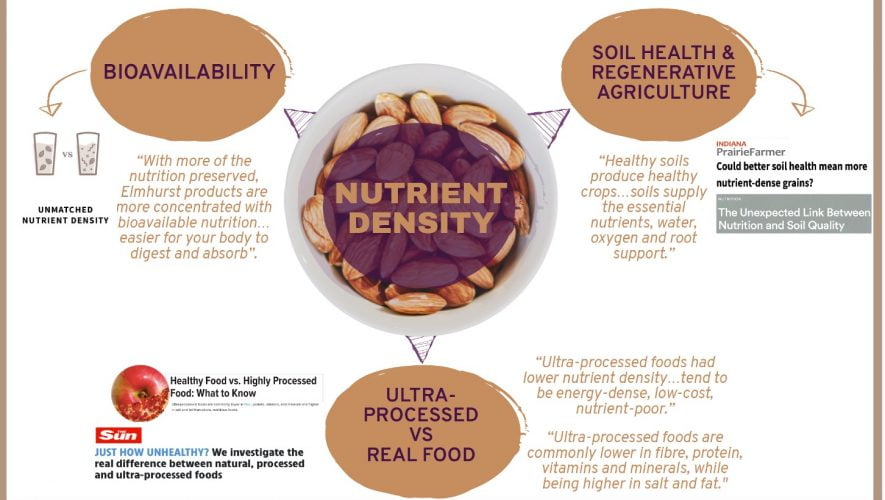Nutrient Density[1] is an emergent trend that will exert a growing influence on marketing and product development over the next five years – and it could benefit certain categories in particular.
“The concept of foods being ‘nutrient-dense’ has been floating around for more than 20 years in nutrition circles, but it has moved on rapidly lately, legitimized by the term ‘nutrient density’ being used prominently in the new US Dietary Guidelines,” says Julian Mellentin, director of food & nutrition consultancy New Nutrition Business.
Mellentin is also the author of the highly-respected annual trends report 10 Key Trends in Food, Nutrition & Health. The new 2022 edition, available now at www.new-nutrition.com, names Nutrient Density as a key trend for the first time.
“The concept has come onto companies’ radar screens and is emerging as a marketing term,” says Mellentin. “For now, this concept is led by the US market – as new ideas so often are – but terms like ‘nutrient dense’ and ‘nutrient rich’ have obvious appeal to marketers and will spread more widely.”
Nutrient density has the potential to create value among the 25-30% most health-active consumers. And it’s such a simple concept that it’s also easy for mainstream consumers to embrace: When New Nutrition Business asked consumers about nutrient density in its annual five-country survey, 12% of all respondents – and 21% of Spanish respondents – said they had heard of it.
“One of the attractions of this terminology for marketers is that there is no single agreed definition, either in regulatory terms or in the mind of the consumer,” says Mellentin. “In practice, nutrient density is something that consumers learn about from social media and they can lean towards whichever definition they find most appealing.”
Some consumers will lean towards plants, others grains, others dairy or even meat – all of which can be considered nutrient-dense (see table).
“Nutrient-dense has value because it’s still a long way from becoming a meaningless marketing label in the way that ‘natural’ did, or that ‘plant-based’ is becoming,” says Mellentin.
Nutrient density links to other benefit platforms such as bioavailability, sustainability (soil health & regenerative agriculture) and touches on the rising tide of concern around ultra-processed foods (UPFs).
Companies are already embarking on educating consumers and are using nutrient density in connection with sustainability and bioavailability as well as human health. Categories that stand to benefit most from nutrient density include:
Dairy & meat – most animal-source foods are considered nutrient-dense alongside many plant-based foods, something consumers may not yet know but will learn as companies start to use the term on the packaging and in consumer education. Marketers of animal-source foods are increasingly embracing the nutrient density concept, and are ahead of plant-based in working to build consumer awareness and create competitive advantage.
- The leading yogurt brand in the US, Chobani, is communicating about nutrient density for its fitness-oriented brand, Chobani Complete, and for Chobani Greek.
- California-based Alexandre Family Farm links grass-fed, good fats and nutrient richness in its communications: “Cows that eat only grass produce more nutrient-rich milk”.
Plant-based – Given the fragmentation of consumer beliefs about food and health, plant-based brands cannot assume that most consumers will continue to see plants as the most nutrient-dense option, and it will become necessary for them to incorporate the term into plant-based strategy and communications.
Some processors are already investing in technology to deliver better nutrient density, such as the Elmhurst plant milk brand in the US, whose process preserves more of the bioavailable nutrition of almonds, taking “the simplest ingredients and maximizing their nutrition”.
[1] Put very simply, nutrient density identifies the amount of beneficial nutrients in a food product per energy content (100 kcal), weight (100g) or serving. Most nutrient density calculations have relied on nutrient-to-calorie ratios, focusing on beneficial nutrients such as protein, fiber, vitamins and minerals.



